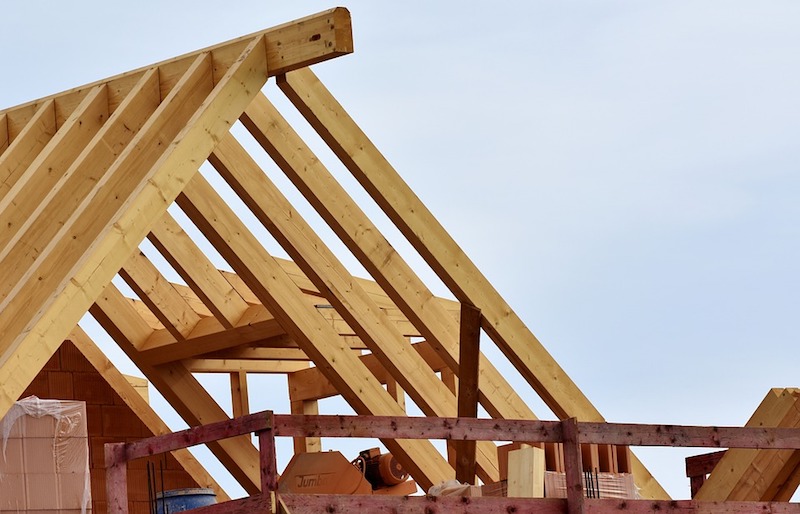Thirty-eight states and the District of Columbia added construction jobs between April 2017 and April 2018, while 29 states added construction jobs between March and April, according to an analysis by the Associated General Contractors of America of Labor Department data released today. Association officials said the employment growth likely would have been higher if firms could find more qualified workers to hire.
"Firms in many parts of the country are working to keep pace with growing demand for construction services," said chief economist Ken Simonson. "Many of those firms are having a hard time finding and hiring enough qualified workers as the pool of available workers remains very tight."
California added the most construction jobs (59,500 jobs, 7.4%) during the past year. Other states adding a large number of new construction jobs for the past 12 months include Texas (40,600 jobs, 5.7%); Florida (34,900 jobs, 7.0%); Georgia (13,900 jobs, 7.6%) and Arizona (11,700 jobs, 8.2%). West Virginia (11.6%, 3,500 jobs) added the highest percentage of new construction jobs during the past year, followed by Nevada (9.8 percent, 8,200 jobs); Arizona; Utah (8.1%, 7,700 jobs) and Idaho (7.9%, 3,500 jobs).
Eleven states shed construction jobs between April 2017 and April 2018 while construction employment was unchanged in Montana. North Dakota lost the highest total and percentage of construction jobs (-4,900 jobs, -17.0%), followed by Iowa (-2,500 jobs, -3.2%); Missouri (-1,500 jobs, -1.2%); South Carolina (-1,400 jobs, -1.4%) and Nebraska (-1,100 jobs, -2.1%). In addition to North Dakota, other states that lost a high percentage of construction jobs for the month included South Dakota (-3.3%, -800 jobs); Iowa; Nebraska and Hawaii (-1.9%, -700 jobs).
Twenty-nine states added construction jobs between March and April. California added the most (10,000 jobs, 1.2%), followed by Texas (4,100 jobs, 0.6%); Louisiana (2,200 jobs, 1.5%); Georgia (2,100 jobs, 1.1%) and Washington (2,100 jobs, 1.0%). Louisiana added the highest percentage of construction jobs for the month, followed by Kentucky (1.4%, 1,100 jobs); New Hampshire (1.4%, 400 jobs); Alaska (1.3%, 200 jobs) and Vermont (1.3%, 200 jobs). Employment set an all-time high in Texas.
Nineteen states lost construction jobs from March to April, while construction employment was unchanged in Mississippi, Montana and the District of Columbia. Indiana lost the most construction jobs for the month (-2,300 jobs, -1.6%), followed by Wisconsin (-2,000 jobs, -1.6%); South Carolina (-1,300 jobs, -1.3%); Massachusetts (-1,300 jobs, -0.8%) and Michigan (-1,100 jobs, -0.6%). North Dakota lost the highest percentage of construction jobs (-2.8%, -700 jobs), followed by Delaware (-1.7%, -400 jobs); Wisconsin; Indiana; South Carolina and South Dakota (-1.3%, -300 jobs).
Association officials said strong demand, particularly from the private-sector, was prompting firms in most states to add staff. But they cautioned that relatively few young workers appear to be entering the construction industry. They said the strong economy was increasing competition for most workers and construction recruiting is hampered by the fact relatively few schools offer instruction in construction skills or counsel students to consider high-paying construction careers.
"The collective cultural fixation on urging every student to go to college and seek office jobs means relatively few young adults are ever encouraged to consider careers in construction," said Stephen E. Sandherr, the association's chief executive officer. View the state employment data by rank, state, and peak. View the state employment map.
Related Stories
High-rise Construction | Jan 23, 2017
Growth spurt: A record-breaking 128 buildings of 200 meters or taller were completed in 2016
This marks the third consecutive record-breaking year for building completions over 200 meters.
Market Data | Jan 18, 2017
Fraud and risk incidents on the rise for construction, engineering, and infrastructure businesses
Seven of the 10 executives in the sector surveyed in the report said their company fell victim to fraud in the past year.
Market Data | Jan 18, 2017
Architecture Billings Index ends year on positive note
Architecture firms close 2016 with the strongest performance of the year.
Market Data | Jan 12, 2017
73% of construction firms plan to expand their payrolls in 2017
However, many firms remain worried about the availability of qualified workers.
Market Data | Jan 9, 2017
Trump market impact prompts surge in optimism for U.S. engineering firm leaders
The boost in firm leader optimism extends across almost the entire engineering marketplace.
Market Data | Jan 5, 2017
Nonresidential spending thrives in strong November spending report
Many construction firms have reported that they remain busy but have become concerned that work could dry up in certain markets in 2017 or 2018, says Anirban Basu, ABC Chief Economist.
Market Data | Dec 21, 2016
Architecture Billings Index up slightly in November
New design contracts also return to positive levels, signifying future growth in construction activity.
Market Data | Dec 21, 2016
Will housing adjust to an aging population?
New Joint Center report projects 66% increase in senior heads of households by 2035.
Market Data | Dec 13, 2016
ABC predicts modest growth for 2017 nonresidential construction sector; warns of vulnerability for contractor
“The U.S. economy continues to expand amid a weak global economy and, despite risks to the construction industry, nonresidential spending should expand 3.5 percent in 2017,” says ABC Chief Economist Anirban Basu.
Market Data | Dec 2, 2016
Nonresidential construction spending gains momentum
Nonresidential spending is now 2.6 percent higher than at the same time one year ago.
















